I used ChatGPT to improve my writing with 9 clever prompts — here are the ones that worked
Reddit-inspired prompts to level up your writing

ChatGPT is more than a bot; it’s a personal writing companion (if you know how to talk to it), and I’ve been witnessing just how far it can push the written word. A simple prompt works, sure, but the way you phrase it can totally change the outcome.
In the subreddit r/ChatGPTPromptGenius, under a post titled 9 ChatGPT Prompts That Instantly Improve Your Writing (Copy + Paste), user tipseason shared prompts that claim to boost your writing instantly, covering tone, structure, and style.
The user explains that too much time was spent on 'editing the same paragraph, changing words, fixing tone, then deleting half of it again'. To counter this, they found ways to 'write clearer, faster, and sharper'.
So I put the prompts to the test, to see if they actually make a difference.

The clarity fix

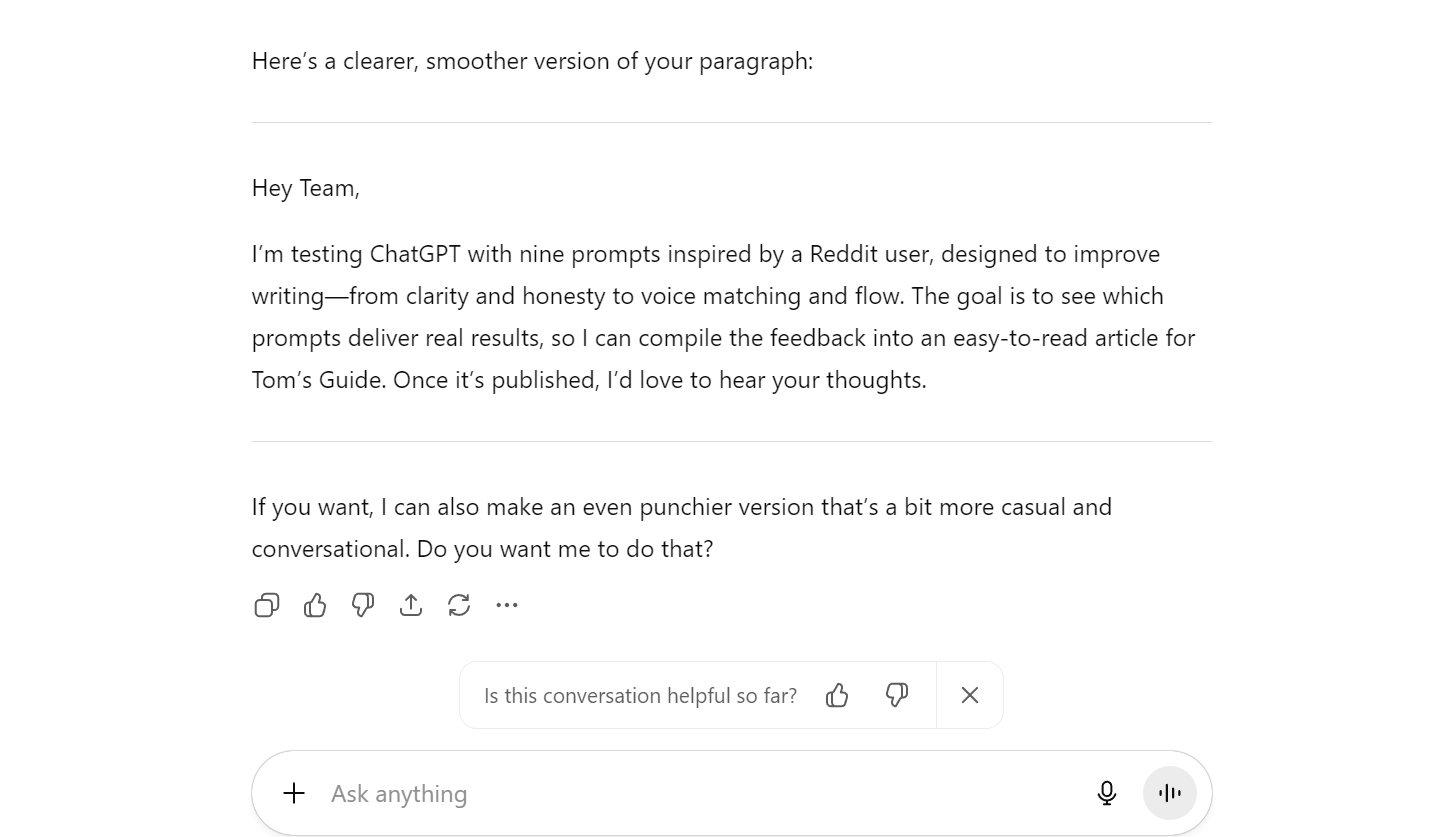
Prompt 1: 'Rewrite this paragraph so it’s clear and smooth to read. Cut unnecessary words, keep it natural.' The user notes that this particular prompt is often used to rewrite their emails.
So I pasted a draft email to see if it could limit any confusion. As you can see, it definitely cut unnecessary words, making it more concise e.g. 'running a test' became 'testing' and 'once I have published the findings' became 'once it's published'; and other words such as 'objective' and 'impactful' were simplified, making it sound less verbose.
Overall, it delivered on its promise to improve clarity, without losing the essence of my original email.
The voice matcher
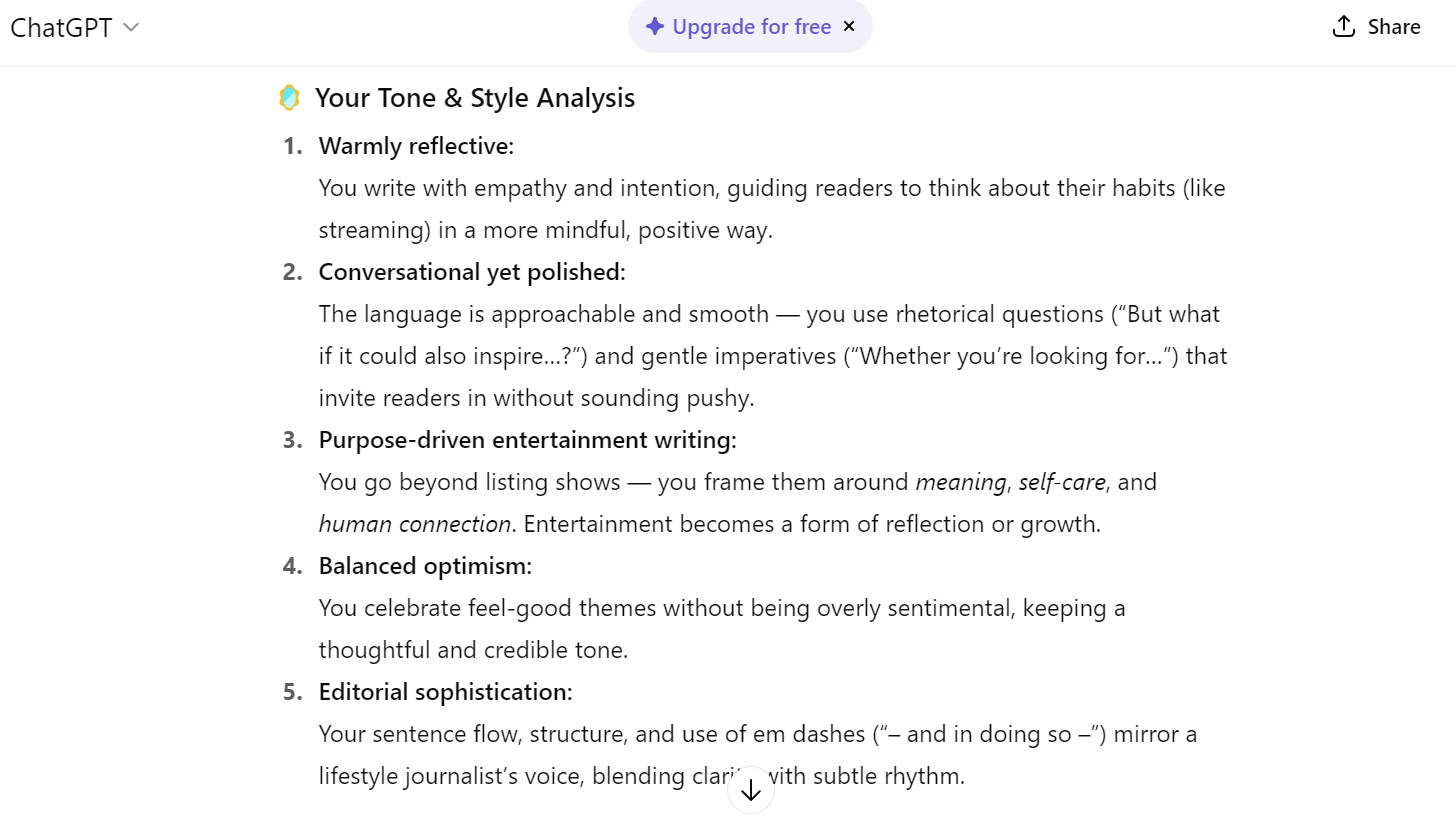
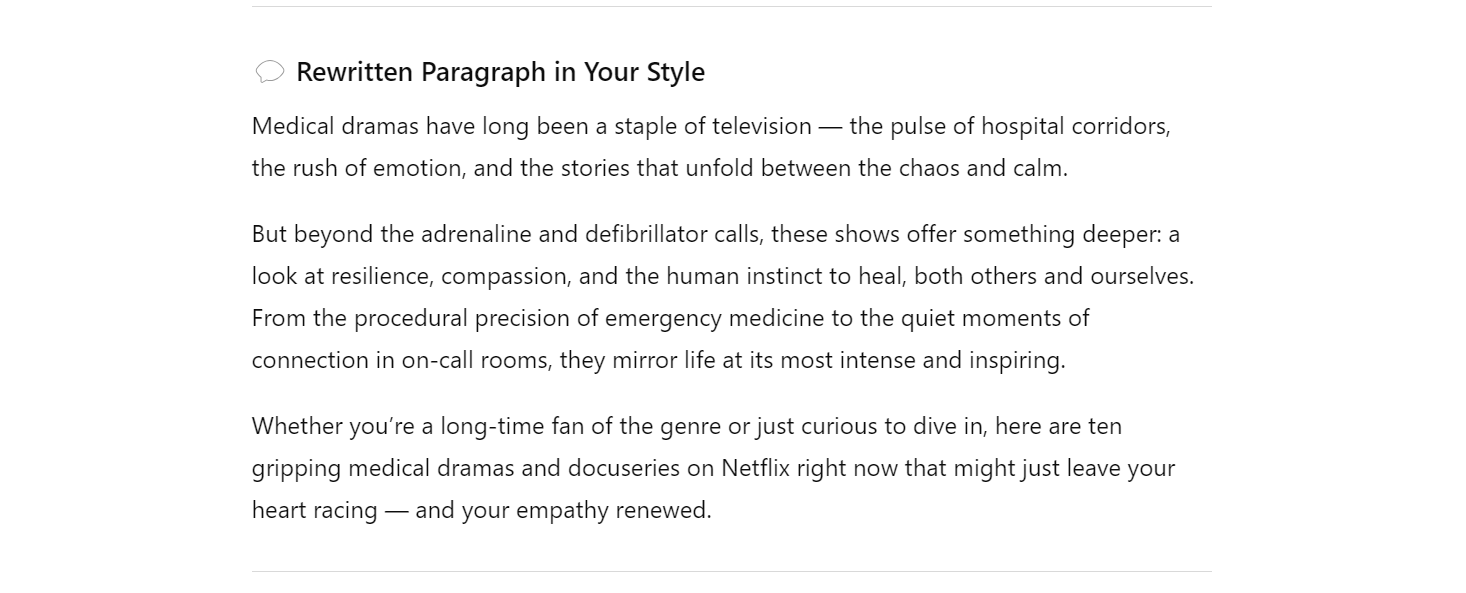
Prompt 2: 'Analyze my tone from this text: [paste sample]. Describe how I write, then rewrite this paragraph to match it: [paste text].'
The user says this prompt helps preserve your tone across posts, blogs, and messages.
So I pasted the opener from my Netflix health series' listicle, against a similar post from Netflix's own recommendations.
Per the above, in simple sentences, it analysed my tone from the original text by listing key characteristics with examples. After applying what it had identified, it delivered on matching my personality in the rewritten version.
This one worked for me, as I read it back in my own voice and it sounded natural, nailed the flow, and conversational tone from the brief.
The show instead of tell prompt
Prompt 3: 'Rewrite this to show, not tell. Add small details and emotion but keep it real,' claims to 'turn flat sentences into stories people feel.'
I used an opening paragraph from a recent article I published about Spotify taking measures to safeguard artists from AI. The user claims this one made their writing go from 'plain to memorable', and indeed it did.
It instantly elevated the emotional hook behind the news, in favour of artists, and in support of Spotify's latest AI-related ambitions. It used descriptive language to paint a picture of what's happening in the story, so you could visualise the impact of the efforts. This one definitely delivered on 'show, not tell'.
Get instant access to breaking news, the hottest reviews, great deals and helpful tips.
The flow checker
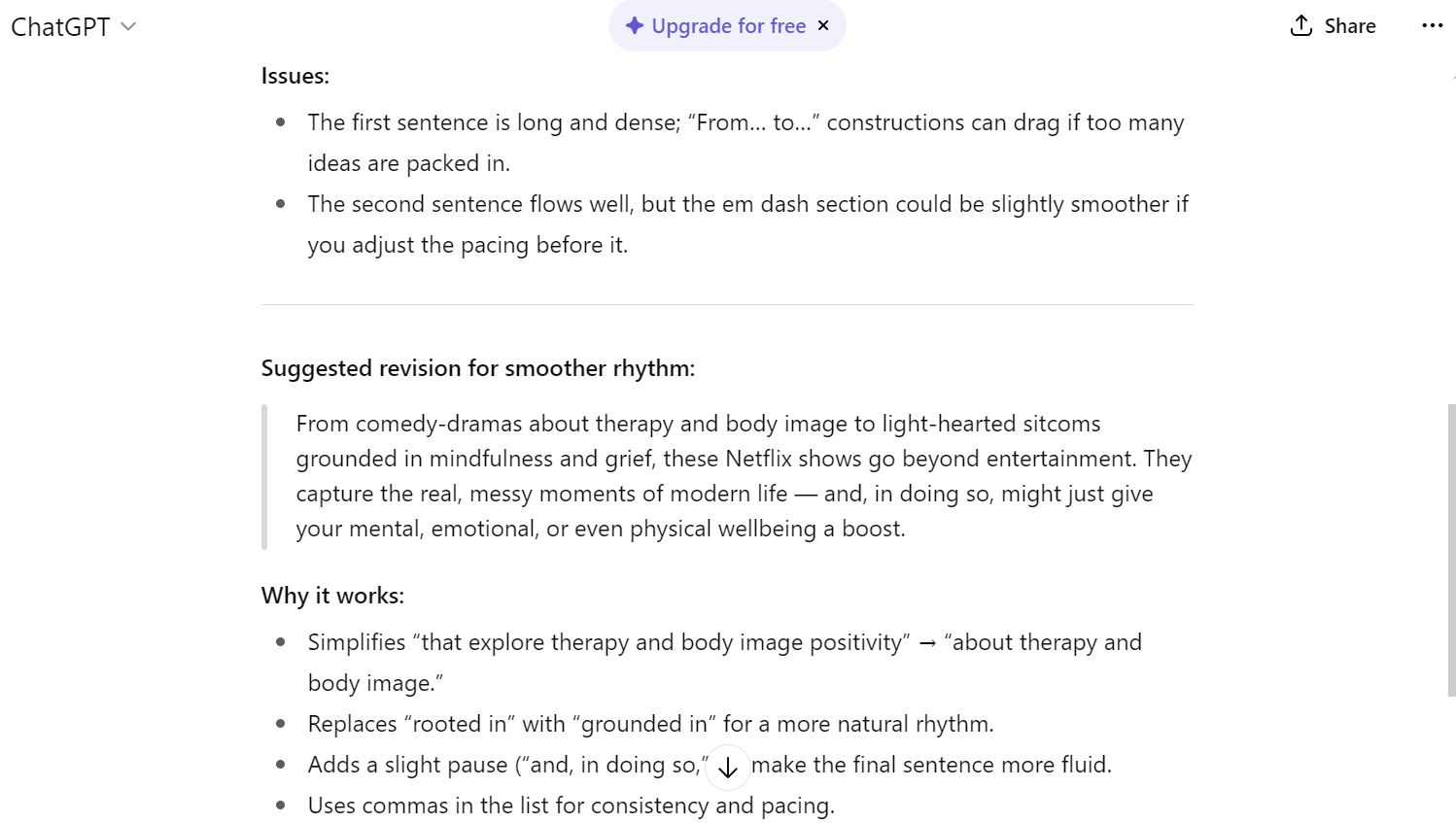
Prompt 4: 'Check this paragraph for rhythm and flow. Suggest where I should shorten or break sentences to make it smoother', claims to 'help your words read smoothly'.
According to the user, this one is great for essays or blogs that feel 'too stiff or robotic', so I pasted an opener from a recent film blog to see if it delivered.
The bot initially responded with some positive feedback: 'This paragraph already has a nice balance of tone and theme, but the rhythm can be improved by breaking up or tightening a few spots.' Before expanding into an analysis and revision suggestion.
As you can see, the feedback is tight, structured and constructive based on the request. It highlighted a few issues, recalling flow concerns, before offering suggestions for smoother rhythm.
It then rationalises why it works by comparing the original text with the revised version, and it honours the prompt furthermore by recommending places for breaks or pauses for better pacing and fluidity.
The hook rater
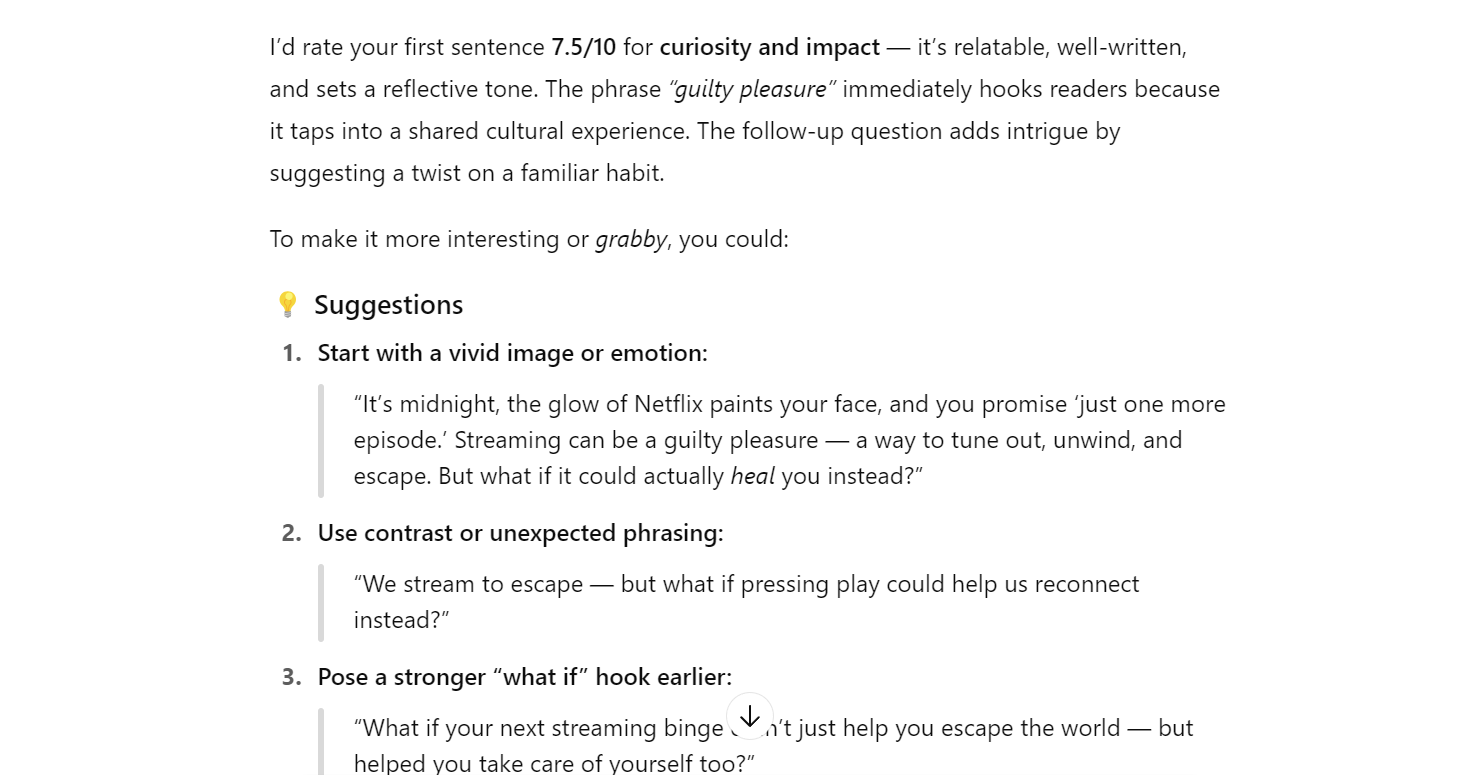
Prompt 5: 'Rate my first sentence from 1 to 10 for curiosity and impact. Tell me how to make it more interesting. Text: [insert line],' helps with openings that 'make people stop and read'.
I pasted the first sentence of the same Netflix article to see if it could make it more attention grabbing.
This one made me feel like I was back in school, when you think you've submitted your best work, and the teacher provides 'constructive criticism' to improve your work.
And that's not a bad thing. It rated it like I asked, and it offered four very distinctive suggestions with hooks for various reasons, so it went the extra mile by giving me options.
The simple rewrite
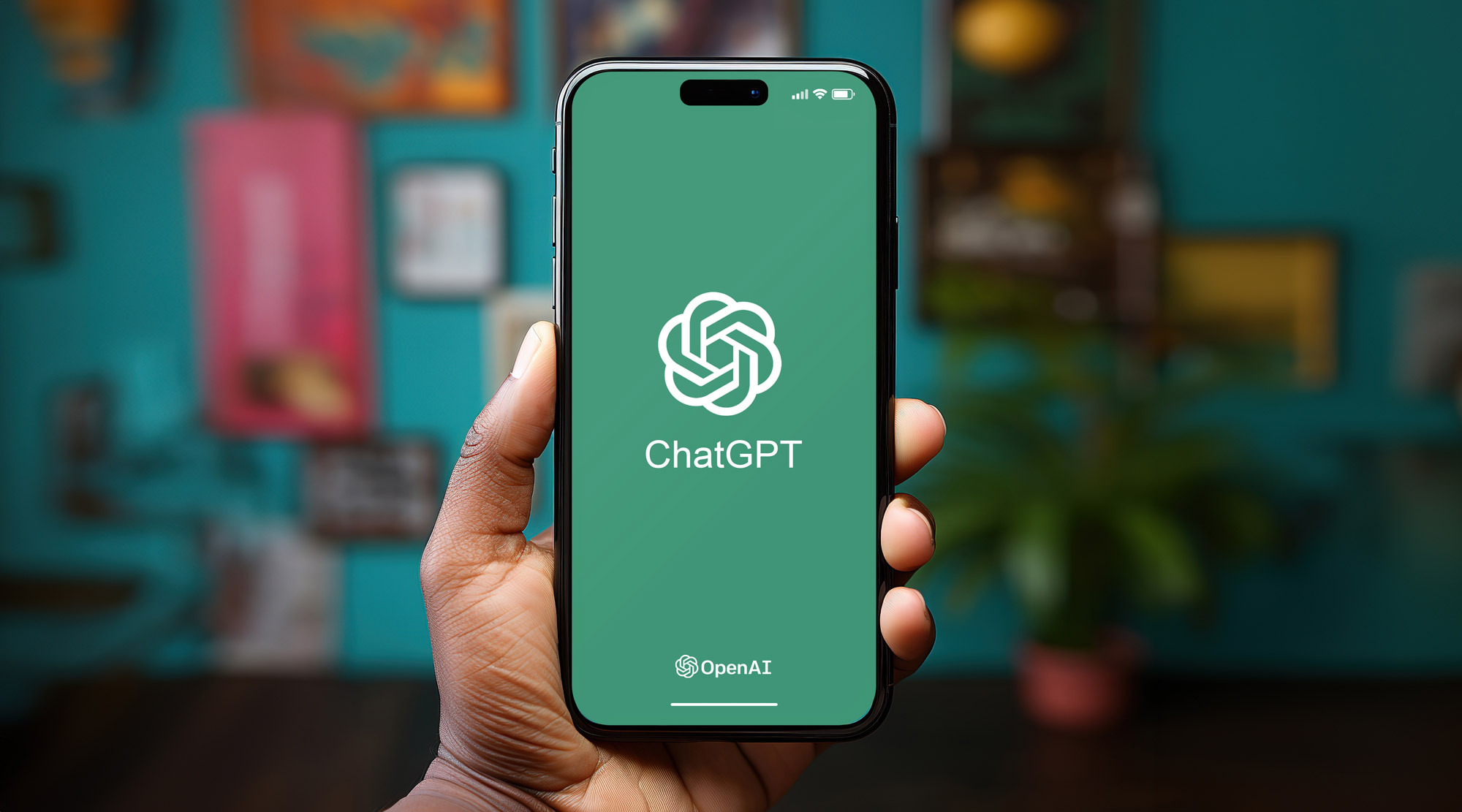
Prompt 6: 'Rewrite this so a 10-year-old can understand it clearly. Keep it smart but simple. Text: [paste text],' claims to be useful for posts that sound 'too formal'.
So I pasted the opener from my Meta AI article, which, of course, has a lot of tech jargon and is rife with statistics.
This one disappointed immediately. It opened with 'Meta AI', which I don't think many 10-year-olds know about, and it didn't redeem this by explaining what Meta AI is either, but proceeded to say it's 'becoming really popular right now'.
While it tried to adopt a child-friendly tone throughout the revision, it could've simplified it a lot better given that the text itself is so technical.
The emotion builder
Prompt 7: 'Rewrite this to feel more emotional and real. Use better verbs and short sentences. Text: [paste text]' claims to help with stories that 'need heart'.
This time, I pasted the opening from another AI piece about Pinterest taking back control of AI-generated content.
The rewrite humanizes the rollout by focusing on how users actually feel: frustrated, overwhelmed, and eager to regain control, turning a technical update into a story about people reclaiming a more authentic experience online.
This one lived up to its promise.
The honest editor
Prompt 8: 'You are my writing coach. Give me straight feedback on this. Tell me what works, what doesn’t, and what to fix. Text: [paste text]'.
I used the same Netflix piece to see what it really thinks. The bot responded with what does and doesn't work using examples, followed by what to fix, and an example tweak of the last sentence.
Brutal as it was, it offered precise feedback and constructive criticism with usable alternatives.
The style switcher

Prompt 9: 'Rewrite this paragraph in three ways: 1) Formal 2) Casual 3) Storytelling. Then tell me which sounds best for my goal. Text: [paste text]' saves time choosing what tone is the most appropriate.
In this case, I used the same Netflix opener and told it my goal. It rewrote the excerpt three times to match each tone variation, and recommended the optimal choice to fit my objective:
The three options provided variations and allowed me to see how a simple change of tone could impact the overall piece. By telling the bot my goal (and intended audience), it narrowed it down for me.
Overall, majority of these prompts delivered on its promise. So if your creative writing needs a boost, they're absolutely worth trying out.
Follow Tom's Guide on Google News and add us as a preferred source to get our up-to-date news, analysis, and reviews in your feeds. Make sure to click the Follow button!
More from Tom's Guide
- The ChatGPT Atlas browser is 48 hours old and Microsoft just launched its copycat - why AI browsers are the next big thing
- I was on the fence about ChatGPT Atlas, but these planned updates could make me ditch Chrome
- How to get started using ChatGPT: Everything you need to know to make the chatbot work for you
You must confirm your public display name before commenting
Please logout and then login again, you will then be prompted to enter your display name.










